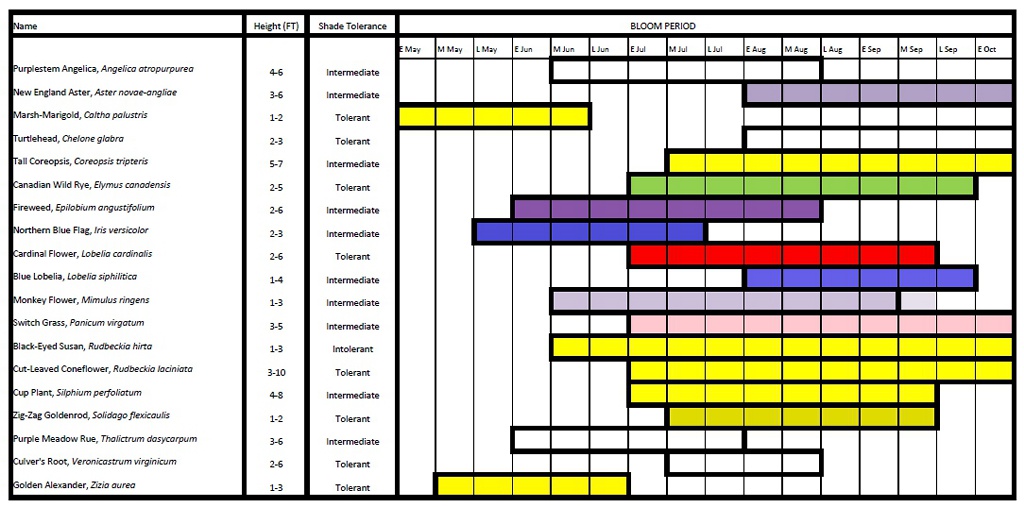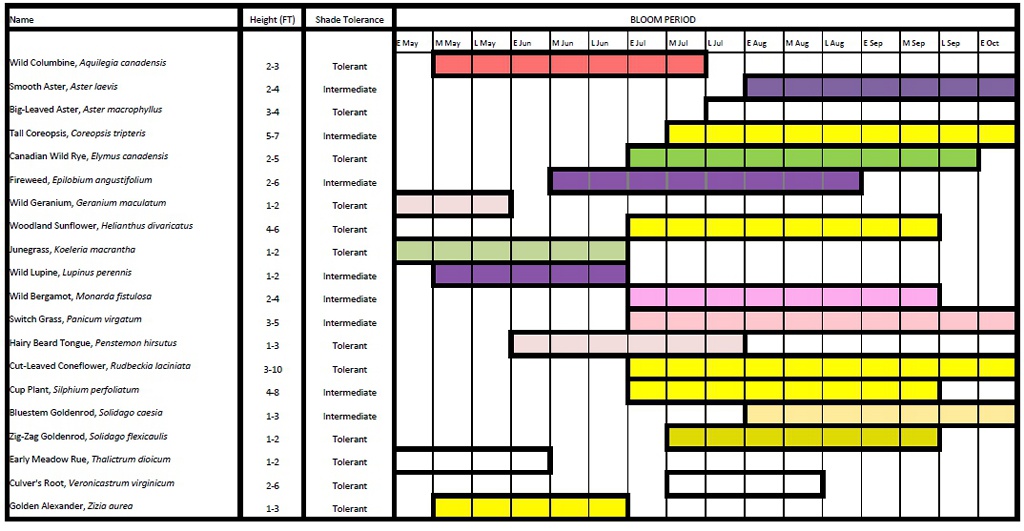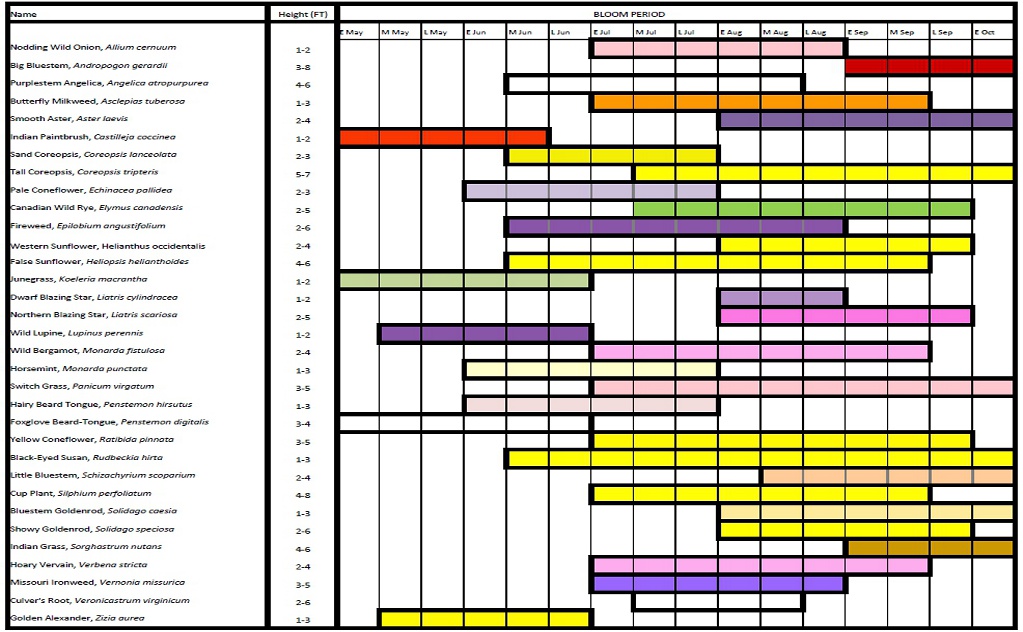Planting a Native Garden
There are many things you should consider when planting a native garden. What follows are some of the more important considerations.
Sun vs. Shade
How much sun will your garden get? Although some native wildflowers, such as the woodland sunflower, are shade tolerant, many need at least a couple hours of sun each day. Others, such as swamp milkweed, cannot tolerate the shade at all.
Wet vs. Dry
Are you planting in a wetland or a dry area? Some plants can tolerate it being damp, but not soaked, while others specifically require very dry, sandy soil. There are 5 basic levels of moisture: Wet, Medium Wet, Mesic (middle), Medium Dry, and Dry. Determine your site characteristics before choosing a plant.
Riparian Gardens
Are you planting a buffer strip on a lakeshore or stream bank?
There are many advantages to abandoning a mown lawn on water's edge. Native plants provide wildlife habitat and help filter contaminants from water leaving your property and entering a stream or lake. In addition, their deep root systems minimize erosion.
Plus, you'll never have to mow again!
Pollinators
Do you want to attract butterflies, pollinators, or natural enemies of garden pests? Some plants are better than others at providing this function and the OCD has information to help you decide!
Sun vs. Shade
How much sun will your garden get? Although some native wildflowers, such as the woodland sunflower, are shade tolerant, many need at least a couple hours of sun each day. Others, such as swamp milkweed, cannot tolerate the shade at all.
Wet vs. Dry
Are you planting in a wetland or a dry area? Some plants can tolerate it being damp, but not soaked, while others specifically require very dry, sandy soil. There are 5 basic levels of moisture: Wet, Medium Wet, Mesic (middle), Medium Dry, and Dry. Determine your site characteristics before choosing a plant.
Riparian Gardens
Are you planting a buffer strip on a lakeshore or stream bank?
There are many advantages to abandoning a mown lawn on water's edge. Native plants provide wildlife habitat and help filter contaminants from water leaving your property and entering a stream or lake. In addition, their deep root systems minimize erosion.
Plus, you'll never have to mow again!
Pollinators
Do you want to attract butterflies, pollinators, or natural enemies of garden pests? Some plants are better than others at providing this function and the OCD has information to help you decide!
Types of Gardens
Butterfly Garden
These native plants encourage butterflies by providing good food and/or shelter during all phases of the butterfly life cycle.
These native plants encourage butterflies by providing good food and/or shelter during all phases of the butterfly life cycle.
Pollinator Garden
These native plants attract pollinators such as bees, butterflies, and other insects as well as natural enemies to garden pests.
These native plants attract pollinators such as bees, butterflies, and other insects as well as natural enemies to garden pests.
Sun Garden
These native plants do well in full sun.
These native plants do well in full sun.
Shade Garden
Some of these native plants do well in full shade, others in partial sun. Most prefer moist soil.
Some of these native plants do well in full shade, others in partial sun. Most prefer moist soil.
Riparian Sun Garden
These native plants do well in full sun. Some need moist to wet soil and do well in or right next to water. Others prefer moist to dry soil and would be planted higher on the bank. A few, such as the Black-Eyed Susan, have extensive root systems which prevent erosion.
These native plants do well in full sun. Some need moist to wet soil and do well in or right next to water. Others prefer moist to dry soil and would be planted higher on the bank. A few, such as the Black-Eyed Susan, have extensive root systems which prevent erosion.
Riparian Shade Garden
These native plants do well in partial sun. Some, such as the Cardinal Flower, need moist to wet soil and do well in or right next to water. Others prefer moist to dry soil and would be planted higher on the bank. A few, such as the Black-Eyed Susan, have extensive root systems which prevent erosion.
These native plants do well in partial sun. Some, such as the Cardinal Flower, need moist to wet soil and do well in or right next to water. Others prefer moist to dry soil and would be planted higher on the bank. A few, such as the Black-Eyed Susan, have extensive root systems which prevent erosion.
Rain Gardens
Your browser does not support viewing this document. Click here to download the document.
| rain_gardens_-_a_how-to_manual_for_homeowners.pdf | |
| File Size: | 3129 kb |
| File Type: | |





